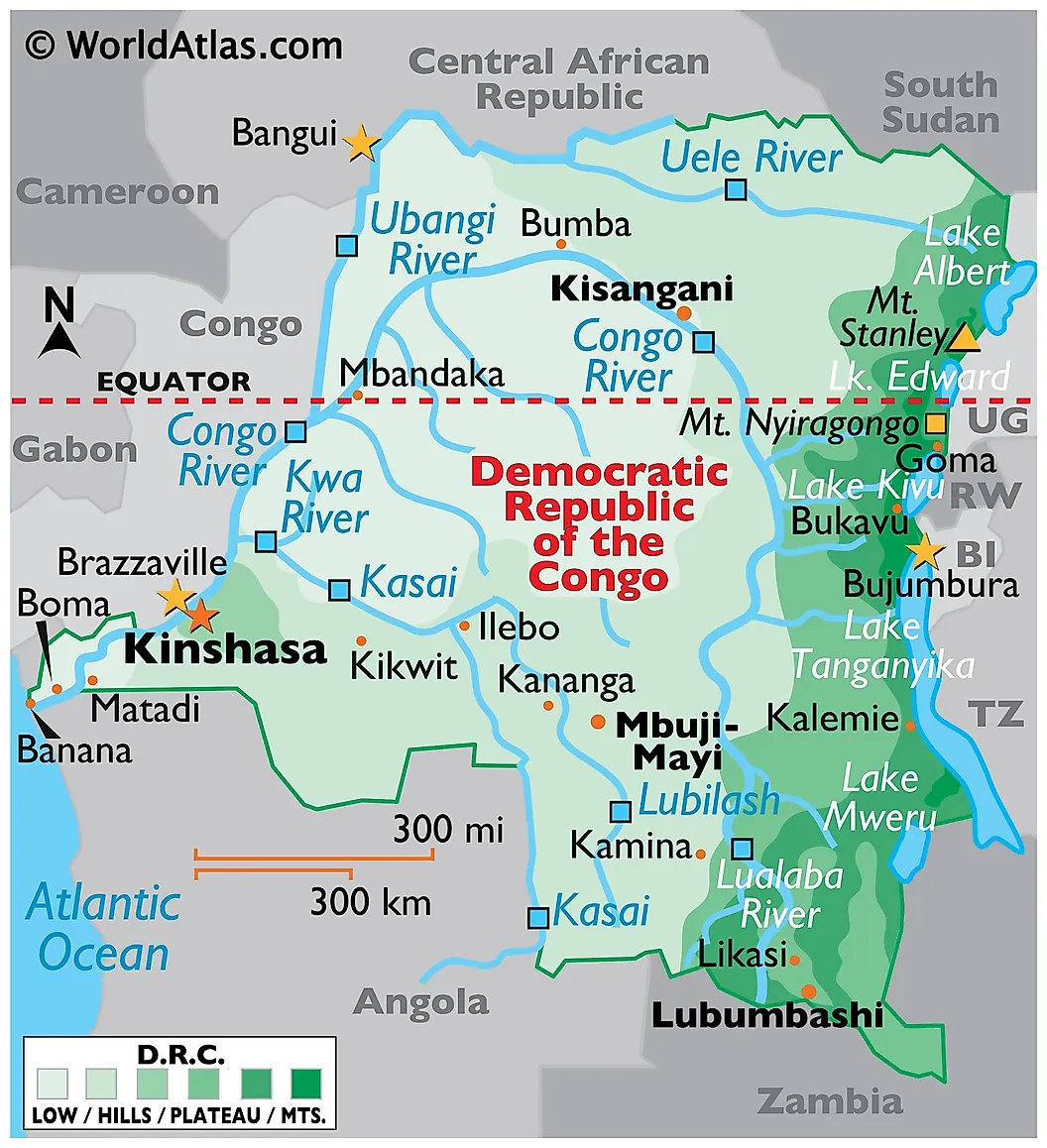Font size:
Print
Places in News: Democratic Republic of the Congo
Context:
The ongoing conflict in the Democratic Republic of Congo (DRC) has escalated significantly with the advance of the M23 rebel group, which has recently captured the city of Goma and is pushing further south into South Kivu province.
More on News
This is part of a long-standing and complex conflict involving power struggles, ethnic tensions, and control of valuable resources, particularly in the eastern part of the country.
Who Are the M23 Rebels?
- The March 23 Movement (M23) takes its name from the March 23, 2009, peace accord, which ended a previous Tutsi-led rebellion in eastern Congo.
- The group launched its current rebellion in 2022, accusing the Congolese government of failing to uphold the 2009 agreement and refusing to fully integrate Congolese Tutsis into the army and administration.
- M23 claims to defend Tutsi interests, particularly against Hutu militias like the Democratic Forces for the Liberation of Rwanda (FDLR).
- The FDLR was founded by Hutus who fled Rwanda after participating in the 1994 genocide, in which nearly one million Tutsis and moderate Hutus were killed.
- M23 has controlled Rubaya, a coltan-mining region (Coltan is a crucial mineral used in smartphones and other electronics) in Congo, for over a year, earning an estimated $800,000 per month through mining taxes.

About Democratic Republic of the Congo
- Location: Central Africa, landlocked except for a small Atlantic coast.
- Form of Government: Republic.
- Size: Second-largest country in Africa (after Algeria).
- Capital: Kinshasa (largest city in Central Africa).
- Official Languages: French.
- The country also recognises four national languages: Kikongo (Kituba), Lingala, Swahili, and Tshiluba.
- Geography: The country borders 9 countries which include Angola, Burundi, Central African Republic, Republic of Congo, Rwanda, South Sudan, Zambia, Tanzania, and Uganda.
- Physical Features:
- The Congo Rainforest, located in the central and western parts of the country, is the second-largest rainforest in the world after the Amazon.
- Most of the DRC is part of the Congo River basin, which includes the Congo River, the second-largest river in Africa at 4,398 km long.
- Major Mountain Ranges: Mount Stanley (highest mountain 5,109 meters), Mount Emin, Karisimbi, Mikeno etc.
- Major Rivers: Congo River, Lomami River, Aruwimi River etc.
- Highest and Lowest Points: The highest point in the DRC is Mt. Stanley at 5,110 meters. The lowest point is the Atlantic Ocean, at 0 meters.
- Climate: In the equatorial climate zone, located near the Equator, temperatures are high (annual average for Yangambi 24.6°C), humidity is high and rains fall throughout the year averaging between 1,600 mm and 2,000 mm annually.
- Natural Resources: Incredibly rich in minerals (diamonds, cobalt, copper), vast forests, and high hydropower potential.


